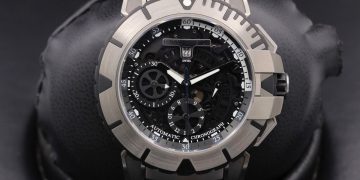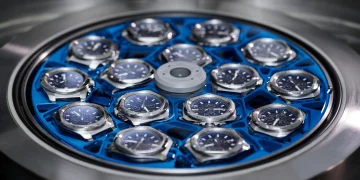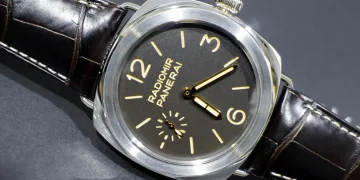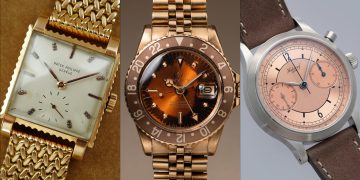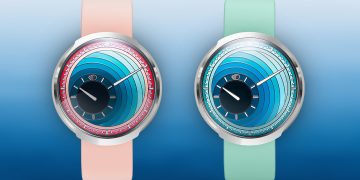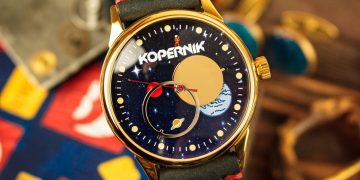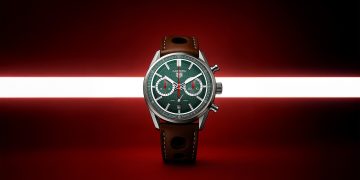Introduction: What Makes Tourbillon Watches So Special?
- Definition of Tourbillon Watches
Start by explaining what a tourbillon complication is. A tourbillon is a rotating cage that holds the escapement and balance wheel, designed to counteract the effects of gravity and improve the accuracy of a watch, especially when it is worn in a stationary position. - The Prestige of the Tourbillon
Mention how tourbillons are considered one of the most prestigious and complicated features in high-end watchmaking, often associated with luxury and sophistication. - Overview of the Article
Outline that the article will focus on who the users of tourbillon watches are, how these watches are evaluated by experts and collectors, and how their value is determined. This includes understanding both the appeal and the criticisms of tourbillons.
1. The History and Evolution of the Tourbillon Complication
- Early Beginnings of the Tourbillon
Provide a historical context of the tourbillon’s invention. Explain how Abraham-Louis Breguet, a Swiss watchmaker in the late 18th century, developed the tourbillon to counteract the gravitational forces on a pocket watch’s movement. Discuss how this innovation marked a significant milestone in horology and how it set the foundation for future advancements in mechanical watches. - Development Through the 19th and 20th Centuries
Trace how the use of the tourbillon evolved through the years, especially in pocket watches and later in wristwatches, as technology advanced. Mention how the complication became more of a symbol of technical prowess than a necessity in timekeeping. - Modern Relevance of the Tourbillon
Explore how, in the modern age, the tourbillon is largely regarded as a demonstration of a watchmaker’s skill rather than a practical feature for everyday wear. This is due to improvements in mechanical movements and electronic timekeeping devices.
2. Who Buys Tourbillon Watches?
- The Elite Watch Collectors
Tourbillon watches are typically sought after by collectors who view them as both highly technical and as works of art. The discussion should dive into the psychology of watch collectors—why they are willing to pay hundreds of thousands (or more) for a timepiece that serves primarily as a display of engineering brilliance and artistic craftsmanship. - Affluent Individuals and Luxury Seekers
Tourbillons are also popular among wealthy individuals who seek to own something that is rare, exclusive, and indicative of their taste for fine craftsmanship. Tourbillons are seen as status symbols within the luxury watch community. - The Watchmaking Enthusiasts and Technophiles
Enthusiasts of horology who appreciate the complexity of mechanical movements often purchase tourbillons for the fascination of the technology. For these users, owning a tourbillon is akin to having a deep connection to the heritage of watchmaking and mechanical innovation. - Investment Buyers
Another type of user is someone who buys a tourbillon as a long-term investment. As limited-edition or high-quality tourbillons can appreciate in value over time, investors are drawn to the potential financial returns, often viewing these watches as a store of value. - Celebrities and Public Figures
Many celebrities are known to wear tourbillon watches, adding to the cachet of these already prestigious timepieces. Explore how high-profile endorsements and celebrity ownership play a role in the public perception of tourbillons.
3. Evaluating Tourbillon Watches: What Makes a Good Tourbillon?
- Technical Evaluation: The Movement
The most important aspect of evaluating a tourbillon is the movement itself. Discuss the key technical factors that make a tourbillon watch exceptional:- The accuracy of the movement.
- The smoothness of the tourbillon’s rotation.
- Complications integrated with the tourbillon, such as perpetual calendars, moon phases, or chronographs.
- The movement architecture, and how the tourbillon integrates with the rest of the watch’s functionality.
- Materials and Craftsmanship
Detail how the materials used in a tourbillon watch can impact its evaluation. For example:- High-grade metals (like titanium, gold, or platinum) for the case.
- Sapphire crystal for the dial, which allows better visibility of the tourbillon.
- The intricacy of the finishing on the movement, which often includes Côtes de Genève, perlage, and anglage.
- Design and Aesthetic Appeal
Discuss how the aesthetic qualities of the watch affect its evaluation. The dial design, tourbillon positioning (whether it’s visible on the front or back), and overall style can make a huge difference. Many collectors appreciate when the watchmakers design the case to complement the tourbillon’s movement. - Brand Reputation and History
Evaluate how the reputation of the watchmaker and the brand’s history play into the value of a tourbillon watch. Brands like Patek Philippe, Audemars Piguet, Jaeger-LeCoultre, and Breguet have earned a reputation for producing some of the finest tourbillons, which naturally enhances the evaluation of their watches. - Innovation and Limited Editions
The rarity and innovation of a tourbillon model can drive its value. Limited-edition releases, experimental features, or unique designs (like a flying tourbillon or a multi-axis tourbillon) all elevate the watch’s status and desirability in the market.

4. Criticisms and Debates: Are Tourbillon Watches Worth the Hype?
- The High Cost of Tourbillons
One of the main criticisms of tourbillon watches is their steep price tag. Tourbillons are often priced in the high five figures to seven figures, and many question whether the complication is worth the cost. Explore the cost-benefit discussion from both an enthusiast’s and a critic’s perspective. - The Practicality of Tourbillons
With modern technology improving the accuracy of mechanical movements, some argue that a tourbillon is unnecessary for everyday use, as it doesn’t significantly improve the timekeeping of a watch. Discuss how some modern watchmakers are challenging the use of the complication in practical terms. - Tourbillons as a Symbol of Excess
Tourbillons are often seen as a symbol of excessive luxury. In an era of increasingly minimalist designs, critics may view the complication as a display of opulence rather than a meaningful innovation. Discuss whether or not this perception holds true in today’s market. - Overuse in Contemporary Watches
With the rise of independent watchmakers and brands eager to show their technical prowess, some argue that the tourbillon complication is being overused in watches that don’t necessarily need it. Discuss the challenge of maintaining the prestige of the tourbillon when it becomes too common in luxury watches.
5. The Future of Tourbillon Watches
- The Evolution of Tourbillons
Discuss how tourbillons have evolved over the years. Innovations like multi-axis tourbillons, flying tourbillons, and sapphire tourbillons are pushing the boundaries of the traditional complication. Will we continue to see these kinds of advancements, or will the tourbillon become a niche feature? - Technology and Precision
As watchmaking becomes more advanced, will the tourbillon remain relevant? With the advent of smartwatches, quartz technology, and magnetic resistance, will mechanical complications like the tourbillon have a place in the future of timekeeping, or will they remain primarily as luxury status symbols? - Sustainability and Ethical Considerations
The luxury watch industry has begun addressing sustainability, with brands looking for ways to use more ethical materials and improve environmental footprints. Explore how this might affect the future of luxury complications, including tourbillons.
6. Conclusion: Is the Tourbillon Worth It?
- Reaffirming the Prestige of the Tourbillon
Conclude by reaffirming the unique appeal and importance of tourbillon watches in the world of horology. Highlight that while some may question the practical necessity, the tourbillon will always remain a symbol of mechanical brilliance, craftsmanship, and tradition. - A Personal Connection to Timekeeping
For collectors, enthusiasts, and investors, owning a tourbillon represents more than just telling time—it’s about connecting with centuries-old watchmaking traditions and appreciating the artistry of the craft. This personal connection elevates the value of a tourbillon beyond its practical function. - Looking Toward the Future
Finally, reflect on the future of tourbillon watches, suggesting that while their purpose might evolve, their allure will likely remain constant as a symbol of the finest achievements in horology.



